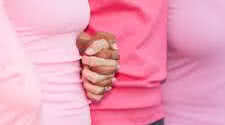Breast Cancer Prevention Strategies with an Active Fitness Lifestyle

There are Various Benefits to Daily Fitness
Even though heart disease is a greater risk statistically, many women fear breast cancer more than any other
disease or personal disaster. Nowadays, however, breast cancer isn't the threat it once was. Research is
constantly suggesting ways to minimize our risk. Detection and treatment options have improved, too.
Good News
The best news is that the fitness lifestyle we love is turning out to be the one least likely to promote
breast cancer - Scientists don't have a vaccine for breast cancer or any surefire way to prevent it, but
they're learning more about factors associated with the disease. As research continues, some factors may
prove more important, others less so. Some studies might show a strong correlation between the disease and a
potential risk factor, while others show no relationship. Even though we don't have guarantees that certain
factors are or aren't related to breast cancer, until we know for sure, the wise course is to do what seems
likely to help.
These are some of the factors that seem to he connected to breast cancer, and the actions you can take to
improve your odds of preventing it.
10 STEPS to help prevent breast cancer
Don't smoke. Smoking is associated with many cancers and other diseases. The dangers are compounded if you engage in additional risky behavior.Don't drink alcohol, or don't drink much. The American Institute for Cancer Research (AICR), while acknowledging that research results have varied, still feels that substantial evidence exists implicating alcohol. Its recommendation is that if you drink, do so moderately. Moderate means no more than one drink a day for a healthy woman.
Exercise regularly, at least four times a week. Norwegian researcher Inger Thune, MD, and colleagues report in The New England Journal of Medicine (May 1, 1997), "Women who exercised at least four hours a week during leisure time had a 37% reduction in the risk of breast cancer." Their conclusion: 'Our results support the idea that physical activity protects against breast cancer, particularly among premenopausal and younger postmenopausal women. Activity during both leisure time and work reduced the overall risk."
Stay lean. Excess bodyfat itself may contribute to the development of certain cancers. Bodyfat stores provide a substrate for converting (aromatizing) androgens to estrogens, and greater lifetime exposure to estrogen increases a woman's risk of breast cancer.
Consume plenty of fruit and vegetables, especially those with carotenoids. Data in the American Journal of Clinical Nutrition (1997) indicate that women with higher levels of carotenoids were less likely to have breast cancer. Carotenoids are a family of nutrients including beta-carotene found in orange fruits and vegetables and some dark-green vegetables.
Keep your fat intake - especially trans fats - low. One study of European women found that those with the highest levels of trans-fatty acids had a 40% greater likelihood of developing breast cancer. Most trans fats in today's diets come from processed foods, including hydrogenated margarine and snack foods. They're also implicated in heart disease.
Eat soy products. Soy has an estrogenic effect that seems to neutralize some dangers of excess endogenous estrogen.
Start living a healthy lifestyle as early as possible and stick with it. Many cancers develop as a two-step process; they're initiated earlier in life but don't progress until something promotes them years later. Staying lean, exercising vigorously and eating low-flu food and soy products can all reduce a woman's lifetime exposure to potential cancer-causing substances.
Don't despair. Even though you may suspect you're genetically predisposed to develop breast cancer, the AICR estimates that only 5%-10% of cancers can be explained by an inherited 'cancer gene." Even then, the gene may lie dormant unless activated by something in the environment. If the gene were activated and cancerous mutation began, the body's natural watchdog genes should kick in to stop the flawed production.
Do frequent self-exams and have regular medical checkups and mammograms. This won't prevent cancer, but can certainly improve your odds if you develop the disease. Early detection and treatment can save your life, and possibly your breasts. Remember that many lumps aren't cancerous. If surgery should be needed, reconstructive procedures can restore your contours.
We've all seen the statistics about one in eight women getting breast cancer. Those are lifetime odds, however, for women who live a long time. The American Cancer Society points out that for a 20-year-old woman, the odds of getting breast cancer in the next 10 years are one in 2,500; for a 30- year-old, one in 250; for a 40-year-old, one in 67.
Some factors you can't do too much about: age at menarche, number of children borne, age when first child was born, and so on. As for heredity, you perceive some risk, but the greater connection would be if your mother and/or sister had developed breast cancer. Lifestyle, considered a factor in many cancers, is something everyone can control.
What once was a sword of Damocles hanging over women's heads can now be put in the cutlery drawer with other potential ailments that we look out for with periodic checkups and common sense, but don't worry about in the meantime as we follow a healthy vigorous bodybuilding lifestyle.